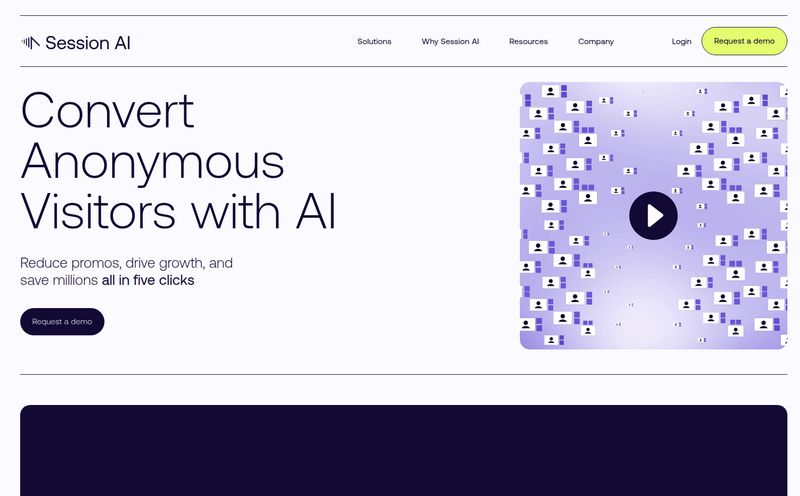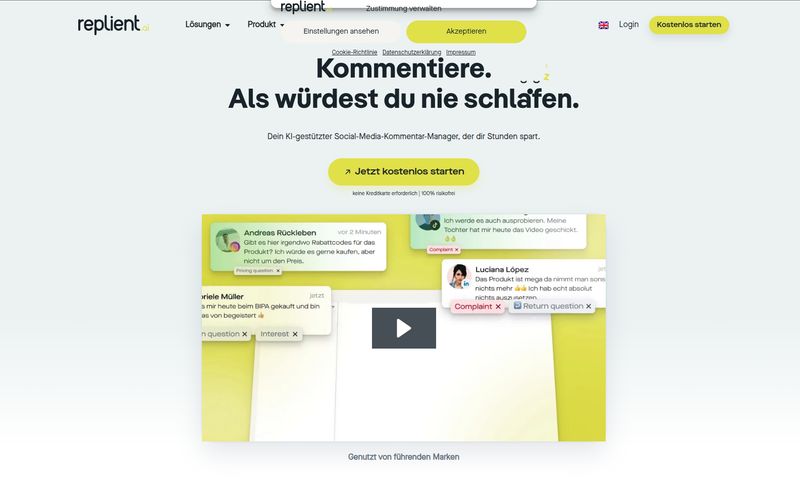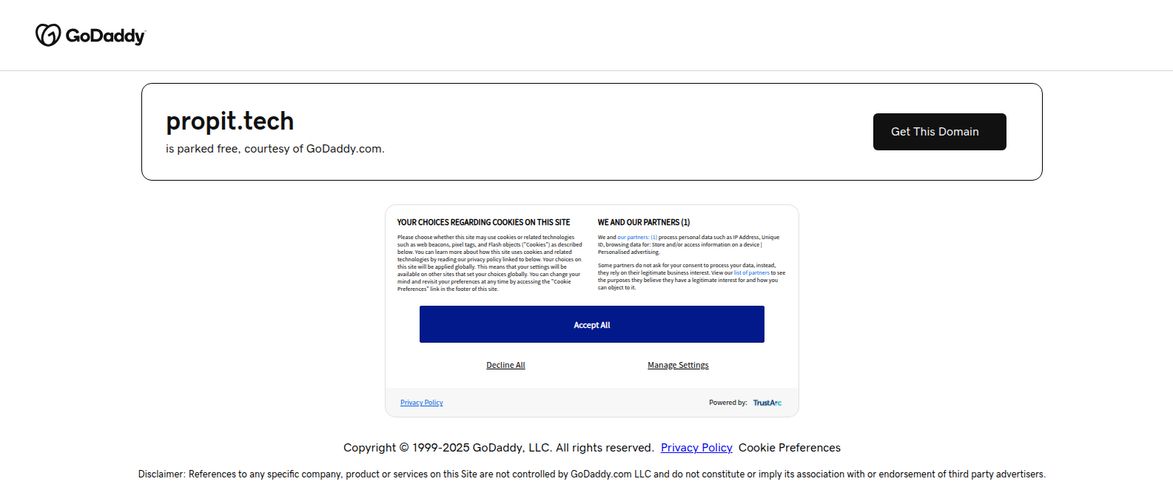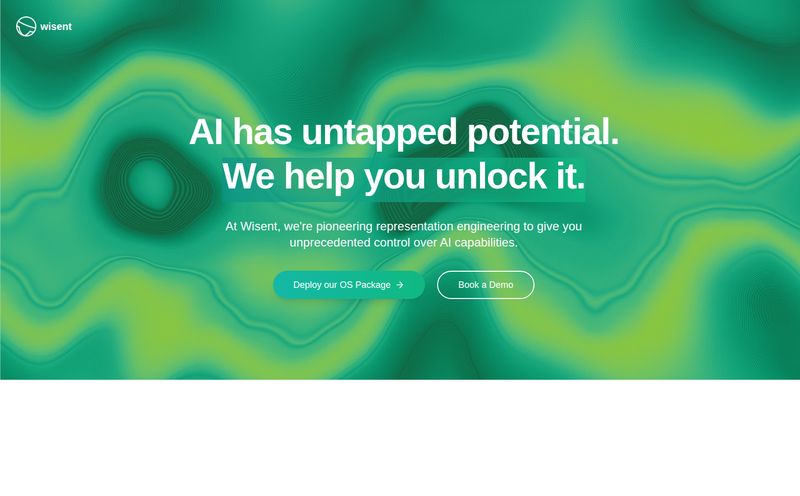For years, the world of business automation has been a bit of a two-party system. You had the super-simple, 'if this, then that' tools that were great for basic tasks, and then you had the complex, developer-heavy platforms that required a computer science degree to even look at. Anything in between felt... clunky. A compromise.
I've been in the SEO and traffic generation game for a long time, and my day is a constant battle against manual, repetitive tasks. So when I hear about a new platform that promises to let you build powerful, AI-driven workflows and even full-on internal apps without writing a single line of code, my ears perk up. But I'm also skeptical. I’ve seen a lot of promises fall flat.
The latest contender to land on my radar is Diaflow. The marketing is slick, promising to let you build GenAI apps with 10x the speed. But does it live up to the hype? I decided to roll up my sleeves, sign up, and see for myself.
What Exactly is Diaflow Supposed to Do?
So, what is this thing? Think of Diaflow as a set of high-tech Lego blocks for your business processes. It’s a visual, drag-and-drop platform designed to help you build custom applications and automate workflows, all supercharged with AI. You’re not just connecting App A to App B; you’re building a small, intelligent machine to solve a specific problem.
Maybe you need a tool to scan incoming customer feedback emails, analyze the sentiment, and then add the important bits to a spreadsheet. Or perhaps an internal Q&A bot that can answer questions about your company's HR policies by reading the actual policy documents. That's the kind of stuff Diaflow is built for. It's for the people on the front lines—the marketing managers, the operations leads, the HR coordinators—who know exactly what they need but don't have the time or skills to code it from scratch.
Getting Hands-On: My First Impressions
Logging into Diaflow for the first time feels clean. There's none of the clutter or overwhelming dashboard chaos you get with some enterprise tools. You’re greeted with a canvas, and it's pretty clear what you're meant to do: start building.
The core of the experience is the workflow editor. It's a visual map where you drag nodes—like 'Get Email', 'Analyze Text with AI', or 'Update Spreadsheet'—and connect them with lines. It’s incredibly intuitive. If you’ve ever made a flowchart in a PowerPoint presentation, you can probably build a basic workflow in Diaflow. It’s this visual nature that, for me, makes it so much more approachable than staring at a blank script.
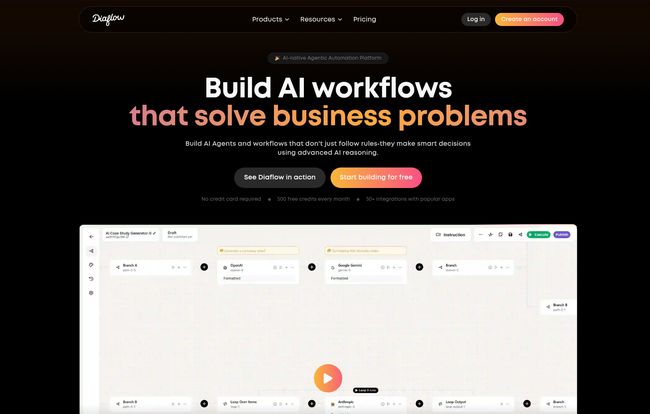
Visit Diaflow
They also have a bunch of pre-built apps and templates, which is a smart move. Instead of starting from zero, you can grab a template for something like 'Document Summarization' and just tweak it to fit your specific needs. It's a great way to learn the ropes and get a quick win. I've always felt that the biggest hurdle with any new tool is that first successful project; Diaflow seems to understand this and helps you get there fast.
The Core Features That Actually Matter
A platform can look pretty, but it's the engine under the hood that counts. Diaflow has a few key features that really make it tick.
The No-Code Workflow Builder is the Star of the Show
This is the heart of Diaflow. The drag-and-drop interface is responsive and, frankly, a bit addictive. You can chain together different actions, add logic (like 'if the email contains 'urgent', do this'), and connect to various Large Language Models (LLMs) to inject some serious brainpower into your process. It turns the abstract concept of 'automation' into a tangible, visual recipe.
AI Agents That Do More Than Just Chat
The term 'AI agent' gets thrown around a lot these days. In Diaflow, it feels practical. You can build an agent that not only responds to queries but actively performs tasks. Imagine a support agent that can't just answer "What's the status of my order?" but can actually look it up in your database, and if there's a delay, draft an apology email for you to approve. That’s a real time-saver.
Taming Your Data with AI
One of the most annoying parts of automation is often getting your data into the system in the first place. Diaflow includes a built-in spreadsheet-like solution called Diaflow Drive and has strong integration capabilities. This means you can pull data from Google Sheets, your own database, or other sources, process it within a workflow, and then send it wherever it needs to go. It breaks down the data silos that plague so many businesses.
Who is Diaflow Actually For? Real-World Use Cases
This is where the rubber meets the road. Based on my playing around, Diaflow is perfect for teams who are 'technically-inclined' but aren't full-time developers. Think of the marketing ops person who lives in spreadsheets or the sales manager who wants to automate lead enrichment.
For instance, their case study with Favo, who saved $6,000 a month, is a perfect example. They likely automated a mind-numbing, manual process that was eating up hours every single day. That’s the sweet spot: high-volume, rule-based tasks that could use an injection of AI smarts.
"This product has transformed our workflow! We were able to develop exactly what our team’s needs in a short time." - A user from Miro
You could use it for:
- HR Onboarding: Automatically send welcome packets, schedule check-in meetings, and answer new-hire questions.
- Marketing Analytics: Pull data from Google Analytics, social media, and ad platforms, then use AI to generate a weekly summary report.
- Document Intelligence: Extract key information from thousands of invoices or contracts and organize it in a database.
Let's Talk Money: Diaflow Pricing Explained
Alright, the all-important question: what's this going to cost? Diaflow has a tiered pricing model that seems designed to scale with you. It’s not the cheapest tool on the market, but the value proposition is about building apps, not just zapping data.
| Plan | Price | Best For | Key Features |
|---|---|---|---|
| Free | Free | Personal use & testing | 3 Apps, 3 Automations, Single LLM |
| Pro | $49/month | Individuals & power users | 10 Apps, Multiple LLMs, Custom Branding |
| Team | $199/month | Small businesses (up to 10 users) | 50GB Drive, Professional Apps |
| Business | $899/month | Medium teams (up to 50 users) | 100GB Drive, Advanced Components |
| Enterprise | Custom | Large organizations | Self-hosting, Advanced Security |
The Free tier is genuinely useful for kicking the tires and building a small personal project. The Pro plan at $49 a month feels like the sweet spot for a solo entrepreneur or a small team lead who wants to prove the concept. Once you get to the Team and Business tiers, you're making a real investment, and you need to be sure the ROI is there. Yeah, $899 a month isn't pocket change, but if you're automating the work of one or two full-time employees, it pays for itself pretty quick.
The Good, The Bad, and The... Work in Progress
No tool is perfect. After spending some quality time with Diaflow, here's my honest breakdown.
The Good: It is genuinely easy to get started. The speed from idea to a working prototype is impressive. The ability to connect to different data sources and use multiple AI models on the paid plans is powerful. It just feels... capable.
The Not-So-Good: Let's be real. As you climb up the plans, the price can get steep, especially for larger teams. And while the templates are great, if you have a truly bizarre or complex workflow, you might feel a little bit constrained. I tried building one of my more ambitious reporting automations and found myself wishing for a bit more granular control that a tool like Make.com might offer. It's a trade-off between simplicity and ultimate power.
Finally, it's clear some features are still new and evolving. This is both a pro and a con. It means the platform is actively growing and improving, but it also means you might encounter the odd quirk or hit a feature wall that will probably be gone in a month or two. A bit of a gamble, but an exciting one if you like being on teh cutting edge.
My Final Verdict: Is Diaflow Worth Your Time and Money?
So, do I think Diaflow is the no-code AI builder we've been waiting for? For a huge chunk of businesses, I think the answer is yes.
Diaflow has carved out a fascinating niche for itself. It isn't trying to be Zapier, which is the king of simple A-to-B connections. It's more than that. It's aiming to be an 'internal app' factory for non-developers. If you're drowning in spreadsheets, manual data entry, or repetitive communication, you should absolutely give Diaflow's free plan a try. Seriously. You'll know within a few hours if it's going to click for you.
If you're a small business ready to get serious about automation and AI, the Pro or Team plan is a compelling investment. For large companies, the Enterprise plan with its custom features and security is the only way to go, and you'll want to have a proper chat with their sales team.
The world of work is changing, and tools like Diaflow are leading the charge. They're making a powerful statement that you don't need to be a coder to build the tools you need to do your job better. And that’s a trend I can definitely get behind.
Frequently Asked Questions About Diaflow
- Can I use Diaflow without any coding knowledge?
- Absolutely. That's the whole point. The platform is built around a visual, drag-and-drop interface. If you can map out a process on a whiteboard, you can build it in Diaflow.
- What kind of AI models can I use?
- The Free plan limits you to a single LLM within a flow, but the paid plans (Pro and up) allow you to use multiple LLMs, including popular models from OpenAI, Anthropic, and others, giving you the flexibility to choose the best AI for each task.
- Is the free plan actually useful?
- Yes, it's surprisingly generous. With 3 apps and 3 automations, it's more than enough to test out the platform's core functionality, build a useful personal tool, or create a proof-of-concept to show your boss.
- How is Diaflow different from Zapier or Make.com?
- While they all deal with automation, their focus is different. Zapier excels at simple, linear 'triggers and actions'. Make.com is for more complex, multi-step backend automations. Diaflow is focused on building more complete, AI-powered internal applications that can have user interfaces and solve more complex business logic problems.
- Can I bring my own data into Diaflow?
- Yes. Diaflow is designed to connect to your existing data stores, whether they are in spreadsheets, databases, or other cloud applications. This is one of its key strengths.
- Can I cancel my Diaflow plan at any time?
- Based on their monthly subscription model, you can typically manage your plan and cancel as needed. However, it's always best to check their latest terms of service on the official pricing page for the most accurate information.
